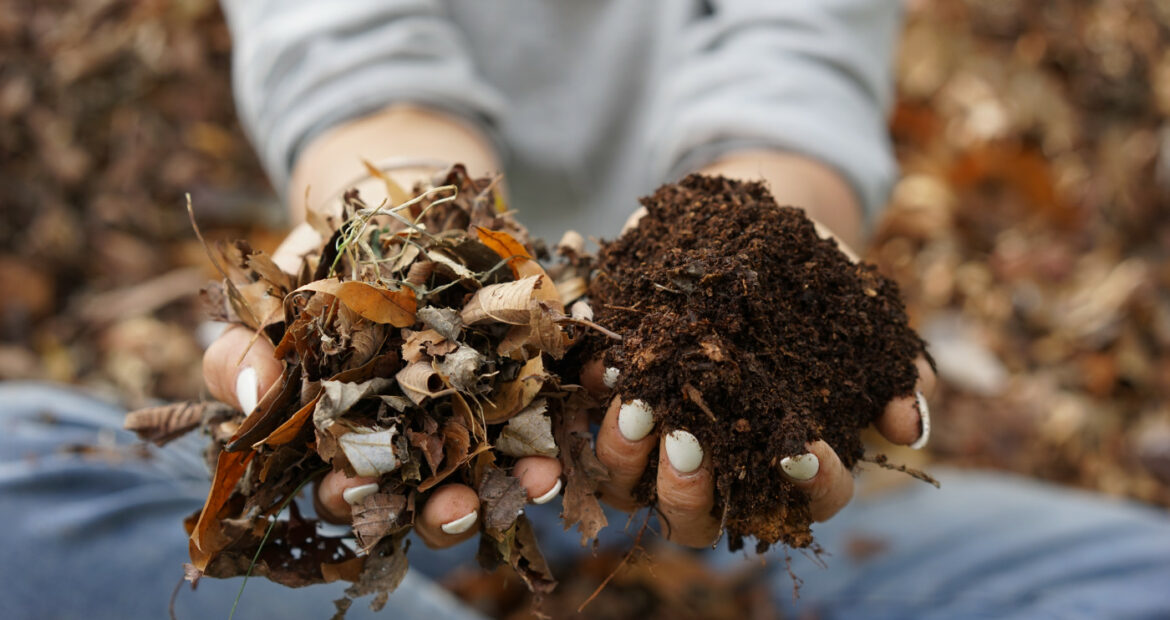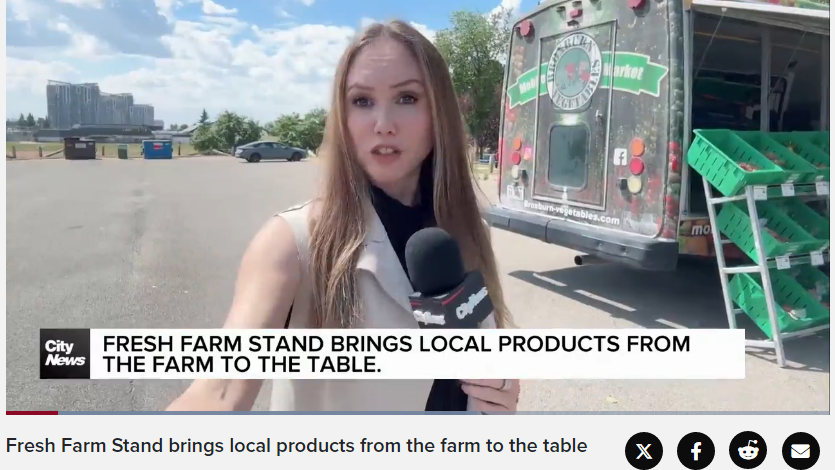SEPTEMBER 2025 – Mulching Your Garden Bed Before Winter
Mulching your garden bed before winter is one of the best things you can do to protect your plants and prepare your soil for spring. Here’s why it’s so important:
Benefits of Mulch in Winter
1. Insulates Soil and Plant Roots
- Mulch acts like a natural blanket, regulating soil temperature.
- It prevents the soil from freezing and thawing too rapidly, which can heave roots out of the ground and damage perennials.
2. Retains Moisture
- Even in winter, plants need some moisture. Mulch helps reduce water evaporation, keeping soil consistently moist under the surface.
3. Prevents Soil Erosion
- Wind, snow, and rain can erode uncovered soil. A layer of mulch keeps it in place and prevents nutrient loss.
4. Suppresses Winter Weeds
- While weed growth slows in winter, it doesn’t stop completely. Mulch helps block sunlight and reduces early weed germination.
5. Protects Beneficial Microorganisms
- A healthy soil ecosystem is crucial for plant health. Mulch provides insulation that helps microbial life survive through the winter.
6. Improves Soil Structure Over Time
- Organic mulches like shredded leaves, straw, bark, or compost break down gradually, enriching your soil with nutrients and improving texture for spring planting.
Tips for Winter Mulching
- When to apply: After the first hard frost, but before heavy snow — usually late fall.
- How thick: Apply 2–4 inches, depending on the material. Avoid piling directly against plant stems or trunks (to prevent rot or pest issues).
- What to use: Shredded leaves, straw, wood chips, bark mulch, or even compost.
Mulching is a simple, cost-effective way to give your garden a head start for spring. It protects what you’ve already planted and builds better soil for what’s to come.
Mulch doesn’t just protect plants—it also plays a vital role in supporting soil microbiology over winter, which is key to a healthy, productive garden. Here’s how mulch and microbiology are connected during the cold months:
The Role of Mulch in Supporting Microbial Life in Winter
1. Insulates Microbial Habitats
- Soil microbes—bacteria, fungi, protozoa, and more—are sensitive to extreme temperature swings.
- Mulch acts as an insulating layer, keeping soil temperatures more stable and protecting microbes from freezing conditions.
- This allows beneficial microbes to stay active longer into the season and recover faster in early spring.
2. Feeds the Soil Food Web
- Organic mulch materials (like leaves, straw, wood chips, and compost) become food for decomposer organisms like:
- Fungi (e.g., mycorrhizal and saprophytic)
- Bacteria
- Earthworms and arthropods
- These organisms break down mulch slowly, converting it into humus—a rich organic material that boosts soil fertility.
3. Promotes Fungal Dominance in Cool Seasons
- Cooler temperatures often favor fungi over bacteria in the decomposition process.
- This fungal activity:
- Helps break down tougher, carbon-rich materials (like wood mulch).
- Builds stable organic matter in the soil.
- Supports woody perennials and trees, which often benefit from fungal-rich soils.
4. Protects Microbial Diversity
- Bare soil is vulnerable to erosion, desiccation (drying out), and temperature extremes—all of which reduce microbial diversity.
- Mulch preserves moisture and structure, creating a better environment for microbial communities to survive winter dormancy.
5. Encourages Nutrient Cycling
- Even in cold soil, microbes continue slow nutrient cycling.
- When mulch breaks down:
- Microbes convert organic matter into plant-available nutrients (like nitrogen, phosphorus, potassium).
- This sets your garden up for a nutrient-rich spring without synthetic fertilizers.
Key Microbes Active Under Mulch in Winter
Even though microbial activity slows down in cold weather, it doesn’t stop entirely. The insulating effect of mulch helps these crucial players stay alive and keep functioning, especially during milder winter stretches.
1. Cold-Tolerant Bacteria
- Actinobacteria (like Streptomyces):
- Break down tough organic matter (cellulose, chitin).
- Thrive in cooler soils and contribute to humus formation.
- Produce antibiotics that suppress harmful pathogens.
- Nitrogen-fixing bacteria (e.g., Azotobacter):
- Survive under mulch in symbiosis with plant roots or independently.
- Help recharge soil nitrogen levels by spring.
2. Fungi
- Saprophytic fungi (e.g., Trichoderma, Penicillium):
- Break down woody mulch and leaf litter.
- Build soil structure and slowly release nutrients.
- Some have biocontrol properties against pathogens.
- Mycorrhizal fungi:
- Form symbiotic relationships with plant roots (especially trees and perennials).
- Remain dormant but viable during winter.
- Resume nutrient exchange early in spring when roots begin growing again.
3. Other Soil Life
- Protozoa: Feed on bacteria, regulating populations and releasing nitrogen into the soil food web.
- Nematodes: Some species overwinter in soil and help control pests or assist in nutrient cycling.
- Earthworms: If soil doesn’t freeze completely, earthworms continue to feed on mulch and enrich soil with castings.
As winter ends and temperatures rise, you should gradually adjust your mulch practices to optimize microbial and plant health.
What to Do in Early Spring:
1. Check Mulch Thickness
- If mulch is more than 3–4 inches, thin it out a bit. Too much mulch in spring can:
- Delay soil warming.
- Suffocate young seedlings.
- Attract pests (like slugs or voles).
2. Pull Mulch Back from Plant Crowns
- Gently rake mulch away from the base of perennials and shrubs to prevent rot and allow air circulation.
3. Incorporate Partially Decomposed Mulch
- If your mulch is breaking down nicely (especially leaves or compost), lightly mix it into the topsoil to feed microbes and improve texture.
4. Add Fresh Mulch as Needed
- After soil has warmed (late spring), top up mulch with a fresh layer to:
- Suppress emerging weeds.
- Retain moisture into summer.
- Keep feeding the soil food web.
- Avoid synthetic fertilizers or fungicides—these disrupt microbial balances.
- Plant cover crops or diverse perennials to offer a year-round root zone for microbes.
Seasonal Mulch & Soil Microbiology Calendar
| Season | Mulch Focus | Microbial Activity | Tips |
| Fall | Apply mulch (2–4″) after leaves drop or harvest ends | Microbes shift to decomposing organic matter; fungi thrive | Use shredded leaves, straw, or compost; mulch after soil cools slightly |
| Winter | Maintain mulch layer to insulate soil | Cold-tolerant bacteria and fungi remain active beneath mulch | Avoid disturbing mulch; check for erosion or compaction |
| Early Spring | Pull mulch back from crowns; assess moisture | Microbes “wake up” as temps rise; fungi resume wood breakdown | Mix decomposed mulch into topsoil; apply compost tea |
| Late Spring | Reapply mulch to retain moisture | Bacterial activity increases; root-microbe symbiosis kicks in | Apply fresh mulch lightly (2–3″); water deeply to support microbes |
| Summer | Maintain mulch (2–4″) to prevent heat stress | Peak microbial activity; earthworms, nematodes, protozoa thrive | Keep mulch moist; avoid over-mulching near plant bases |
| Late Summer/Early Fall | Add organic matter; prep for next mulch layer | Decomposition slows; fungi dominate as temps cool | Start layering mulch for winter again (chop & drop, fallen leaves) |
? Best Homemade Mulch Options for Supporting Microbial Life
These materials are cheap, accessible, and superior for feeding your soil food web. Aim to mix mulch types for a richer microbial environment.
1. Shredded Leaves (a.k.a. Leaf Mold)
- Microbial impact: Rich in lignin—ideal for fungal decomposition.
- How to use: Run over with a mower; apply 2–3 inches thick.
- Bonus: After a few months, turns into leaf mold—a soil-conditioning superfood.
2. Straw (not hay!)
- Microbial impact: Supports bacteria and fungi; decomposes fairly quickly.
- How to use: Scatter 2–4 inches thick; avoid moldy bales.
- Bonus: Great for overwintering garlic and root veggies.
3. Wood Chips
- Microbial impact: Encourages fungal dominance, ideal for trees and perennials.
- How to use: Best used on top of soil, not mixed in; let age before applying.
- Bonus: Excellent for pathways and permaculture-style beds.
4. Kitchen Scraps + Grass Clippings (as sheet mulch under straw or leaves)
- Microbial impact: High in nitrogen; feeds bacteria.
- How to use: Layer in lasagna-style beds under browns like leaves or straw.
- Caution: Do not meat or dairy unless composted first.
5. Finished Compost
- Microbial impact: Adds live microbial populations and humus.
- How to use: Light layer (½–1 inch) under mulch or as top dressing.
- Bonus: Great transition layer between soil and mulch.
6. Grass Clippings (dried)
- Microbial impact: Quick nitrogen release; boosts bacteria.
- How to use: Apply in thin layers only to prevent matting.
- Tip: Mix with leaves for better balance.
Pro Tips for Microbe-Friendly Mulching
- Keep mulch moist but not soggy—dry mulch halts microbial life.
- Avoid dyed or treated wood—chemicals kill beneficial microbes.
- Chop mulch materials smaller to accelerate breakdown and microbe access.
- Let mulch breathe—don’t compact it too tightly.
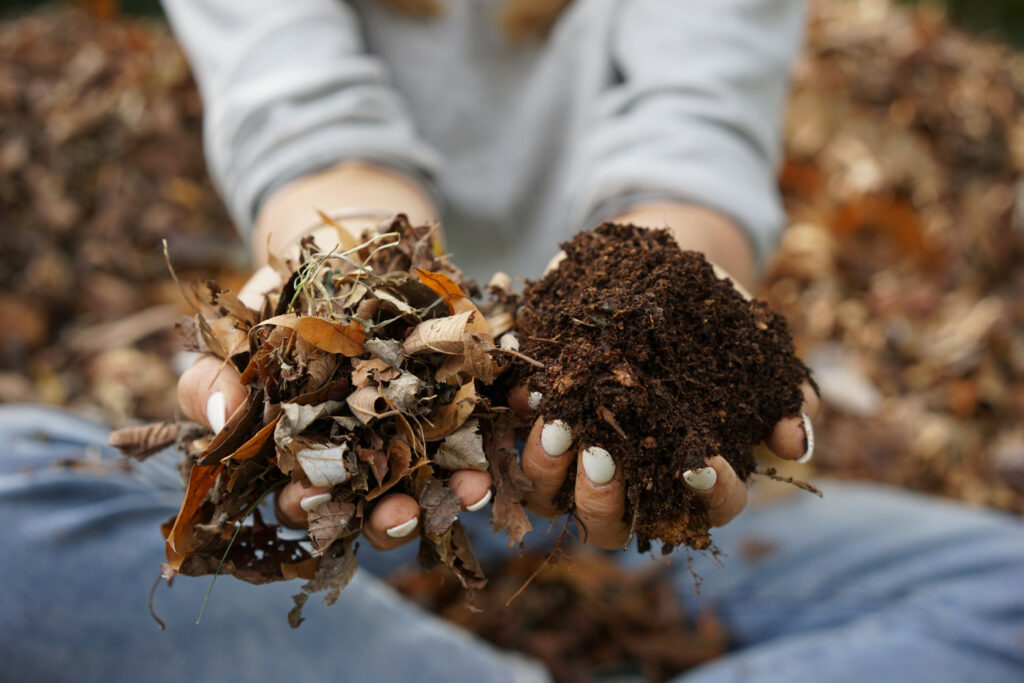
AUGUST 2025 – The Great Value of Calgary’s Urban Canopy by Mary Anne Schleinich, Calgary resident
Have you thought about how trees and greenery contribute to neighbourhoods? I notice the workmen across the street have no space around the new home that’s going in, and at lunch they sit on the meridian under a tree where it’s pleasant and cool. On your walks, you might have noticed some gaping holes where trees and every blade of green have been removed to fill in with newer homes. Did you know that only a quarter of Calgary trees are on city land? That means 75% of Calgary trees are under the protection of residents. Last year, award winning local, Associated Engineering, partnered with City of Calgary to value those trees. They determined replacement value to be $6.9 billion, with an annual service value of $2.5 billion.
Why do urban trees need protection? They do increase property value, but more importantly, they reduce the need for air conditioning, protect from hail and wind, remove pollutants, store water and carbon, and put less stress on the electric grid. Calgary has a tough time keeping its trees because of chinooks, high elevation and few native species. In 1913, William Reader, a visionary teacher and environmentalist, became a city parks superintendent and within 30 yrs he transformed bare prairie into lush areas. The area around his home is now Reader Park and he lined many streets with trees. The lushly treed areas of Bowness Park, Memorial Dr, Sunnyside, and Mount Royal are all due to intentional efforts of such visionaries. Although Calgary’s current goal is to double its tree canopy in three decades, our efforts haven’t kept up with big events such as floods, erosion and summer snowstorms.
Will the city’s upzoning also be an event harmful to trees? Is it time to rethink the build first, plant second approach? What if we built around trees of enormous value and preserved greenery, both below and above? What if we designed treed sidewalks and cycling paths to be community connections among homes and services?
We don’t realize it, but the effect of green is much more than visual beauty and property values. A tree is a plumbing aquifer from roots to crown. It’s a sieve that removes benzenes and emissions and fills the air with oxygen and uncountable medicinal properties that improve mental health and give protection from city heat with its symptoms of cardiac, kidney and cognitive dysfunction. Healthy trees and soil store water underground, which then transpires into cooler air. Healthy trees and soil are also much less flammable. To fireproof a neighbourhood, Didi Pershouse advises we harden the houses and soften the land.
Soil health is possibly even more underappreciated than Calgary trees and not less important. Its substrate is sand, clay and silt. Growing up on the edge of the Sahara Desert and then moving to Calgary, it’s all I knew. Only recently have I come to appreciate that poor soil is like flour while healthy soil is like bread. Which would you rather eat? Which holds water and nutrition? I make a wonderful no-kneed bread with three ingredients: flour, water and yeast. Alone, flour and water is a gluey mess. Adding yeast, it turns into something wonderful. Similarly, when soil contains living plants (best being native and diverse), it becomes healthy and holds more air and water, preventing erosion. Healthy soil stabilizes the entire ecological system for trees, plants, and wildlife. Significantly, it insulates and regulates local temperatures! No wonder the workers want to sit on the meridian for lunch.
You might be astonished to know that healthy soils and plants are a major source of cooling for the planet. They are especially important in cities that are mostly made of impenetrable surfaces that reflect heat into the environment on hot days. Ground heat can vary by as much as 20º C to 80º C degrees when comparing spot temperatures of bare ground to small green patches. The local atmosphere registers these significant differences. Parks, street trees and rain gardens are 3.8ºC, 4.5º C and 4.8º C cooler respectively!
Cities resilient to climate change protect from fire, conserve water, and protect residents from heat. Canada does not tally heat deaths, but we know 619 died in Vancouver during a heat dome. Consider that a tree’s cooling effect is likened to two air conditioners running full time. There is much we can do to improve our resilience.
Calgarians are enthusiastic and the city’s tree planting program was fully subscribed. The Calgary Climate Hub has a forest planting program where they plant and grow tiny forests many times faster than a single tree grows. We can all take notice of the beauty of natural grasses on uncut boulevards. Homeowners can let lawns grow twice as high to double their cooling and boost soil health. We can pay more attention to ground cover, the beauty and diversity of native plants. We can join a compost club and create healthy soil. The City of Calgary can help establish rain gardens in space like where I saw the workers lunch–these are areas that hold water instead of spilling it into the gutters.
Each of us can look for ways to protect trees, especially the old growth, which provide heights and widths of shade, water management, and air improvements. We can learn more about local civic affairs work and local area plans. Civic elections are prime time to raise these issues with candidates. Thoughtful bylaws could bring protection to the old growth that has been entrusted to us by past visionaries and caring residents. We can look for champion leaders, support them, and work to keep our urban treasure.
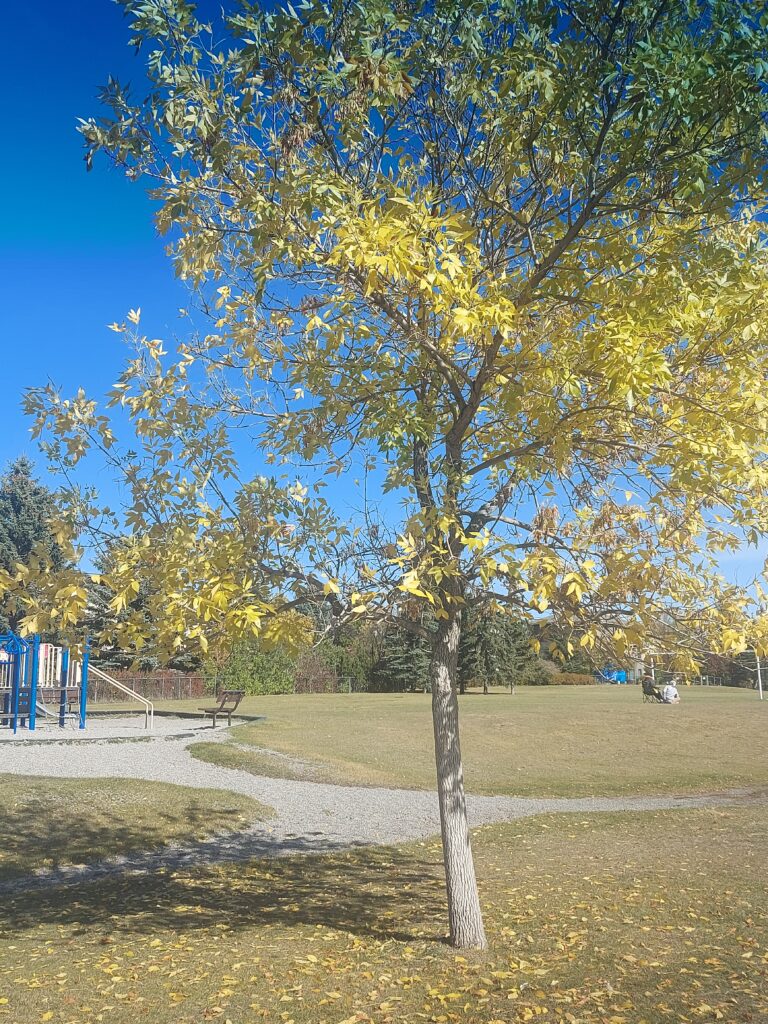
JANUARY 2025 – Start Seeding Your Garden by Deb Sabey, SabeyGardens
Within every seed is something quite a bit magical. No, not Jack and the Beanstalk magical, but magic nonetheless. Whether it starts as big as a sunflower seed or as small as a poppy seed, all the potential of that plant is already there. I love seed starting season. Better than the darkness of New Year’s Day, seed starting brings with it a timely reminder that all things begin again; that hope and growth are possible with the right environment; and that a beautiful future is in our control. They represent an invitation to start again the cycle of growth and possibility.
Prep
Before we plant the first seed, take a moment to assess what you want. I grow tomatoes every year because I feel compelled as a gardener to. I hate tomatoes. Every year I realize I hate tomatoes and give my tomatoes to my neighbors. Don’t be like me. Start instead only the things you want to nurture and see come to harvest.
Next, assess what you CAN grow. Zucchini need sunlight and space; Spinach grows in the dark (ish) and cool. Know what growing space you have and what plants can grow there.
Finally, know your timing. It’s great fun to start growing as soon as you can but a tomato started in January will be leggy and sick long before you can plant it outside. Most plants ask for starting inside no more than 6 weeks in advance. For us, that means sometime around Easter.
The Essentials to Seed Starting
Paying attention to plant needs and days to harvest, pick your seeds. Any of the garden centers will already be selling seeds but you can also shop online.
Get your tools ready. Seed trays or small pots, well-draining potting mix, a spray bottle, greenhouse mimicking dome or cover, and a warming mat. Though the warming mat isn’t necessary, as any warm space will do, I find they make germination more successful and keep mold and damping off less likely.
If you’re wondering which soil is right, look for something light and airy even when wet. Little seedling roots will rot quickly if they become waterlogged. Look for mixes that specifically say “seed starting” or mix your own with coco coir/peat, perlite or sand for drainage, and worm castings.
A final essential is LABELS. Since our plants will make it to the sun later on, make sure your labels won’t be bleached out by using sun-sensitive markers. Don’t get caught in the springtime fallacy of “I’ll remember what I planted”.
Now you’re ready to plant! Fill your trays with the soil mix leaving some space for water spillage. Read your seed packets and plant according to their directions. Label right away. Place trays on top of your heating mat and cover with the dome.
Let it Grow!
The key to happy seedlings is balanced watering, the right light and warmth, a small fan to strengthen stems, and moving them up pot sizes as they grow.
Keep it philosophical
Let’s be honest. None of us are making our fortunes on countertop seedlings. But it’s the reminder of growth, resilience, and hope that is the true gift of starting plants from seed. The joy that comes full circle when you eat the fruit of the seed you planted is not to be ignored. Through the simple act of planting seeds, we connect to the natural cycle of the world we live in. Lean into it and enjoy the results!
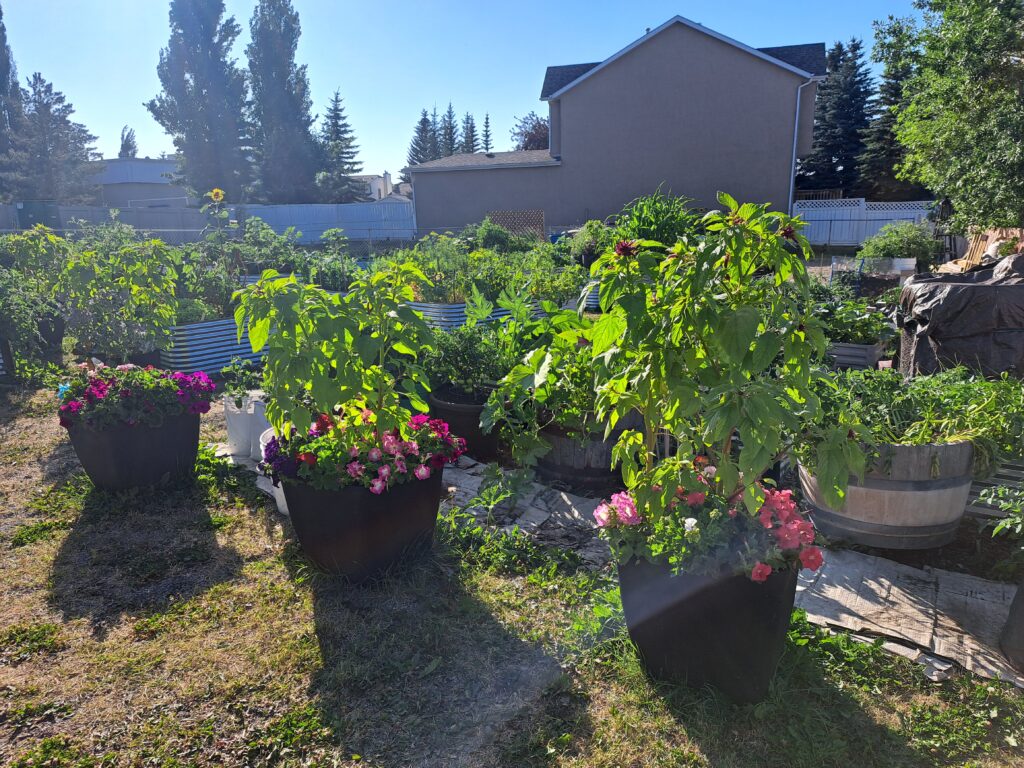
NOVEMBER 2024 – Community Garden Highlights by Karen Lessard
As we settle into fall, it’s the perfect time to reflect on the some of the successes and some not so successes of 2024
A Year of Bounty and Beauty and Hail
This year, the community garden had truly flourished, thanks to the dedication of our members. From vegetable plots to flower pots and the pollinator garden, we’ve enjoyed watching things grow.
Our community garden saw an impressive harvest of tomatoes & squash, peas & carrots, & beans especially for growing in Calgary and after the hail storm in August.
Our pollinator bed was filled with the native wildflowers that were planted last year. The sunflowers self seeded from last year. These blooms not only brought beauty but also supported local pollinator population, proving that our garden is becoming a hub of biodiversity.
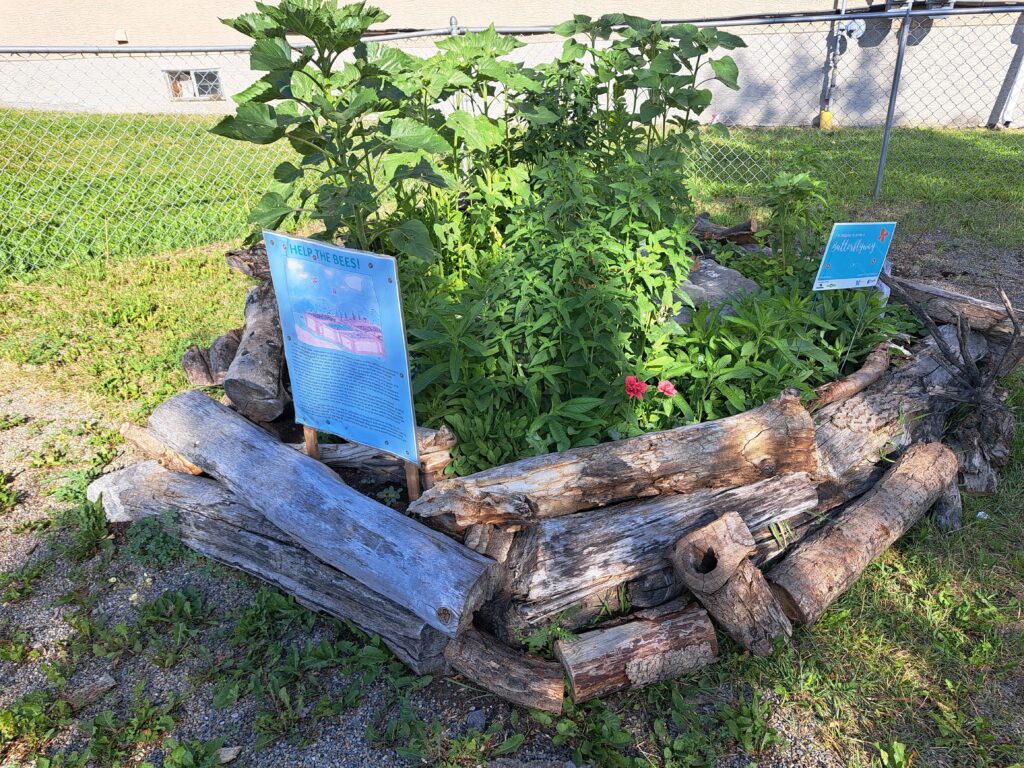
Next year we will try to incorporate more herbs into our garden. One member planted celery and shared it with us. I freeze it and use it in my soup stock.
Beyond the plants and vegetables, the garden continues to serve as a gathering place for members of our community. New friendships have been cultivated alongside the plants, and it’s been heartwarming to see neighbors connect over shared interests. Our garden had partnered with Simons Valley school where the Grade 2 class guided by Miss Corinne donated tomatoes and flowers for us to plant. The collaboration has brought teaching moments to both parties and we are very grateful to them for helping us create this space.
As we look toward next season, there’s plenty to be excited about. Ann and I built 2 new beds for garlic and pumpkins. One of our members, Joan, was very keen to grown pumpkins.
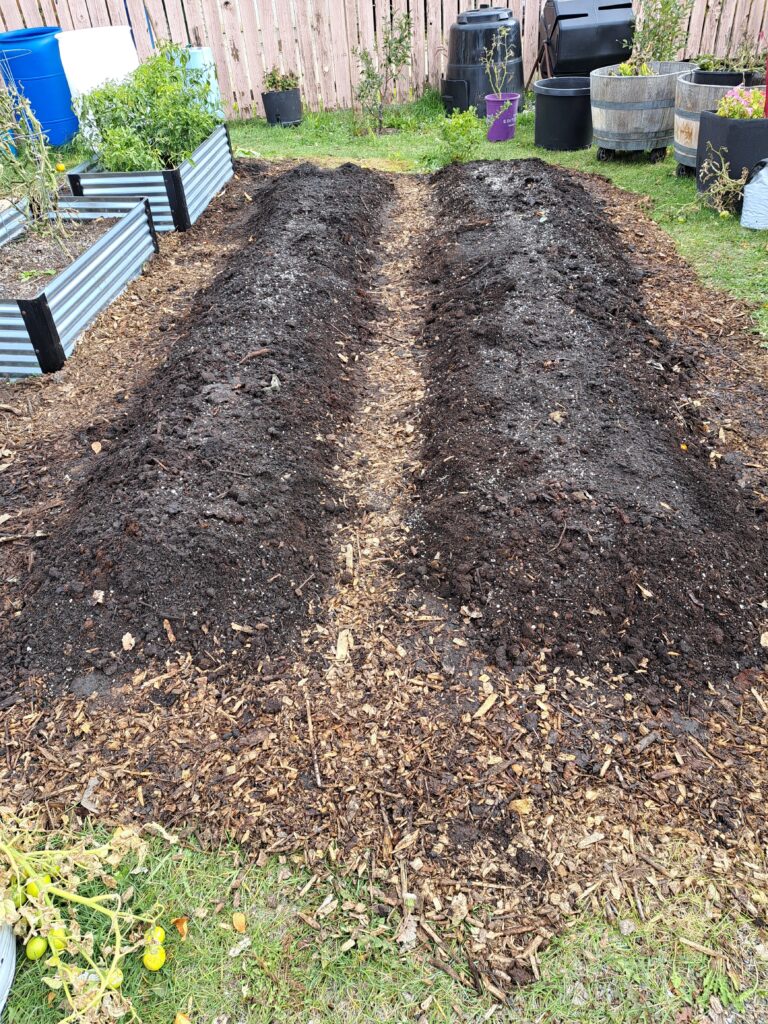
To finish off the year, we joined the Christmas Craft Sale at the church on Nov 9/24. We sold homemade salsa and Rhubarb jam, worm castings, and garlic along with a few stocking stuffers. The salsa was a big hit! Thanks for your support and we hope to try it again next year.
To keep our garden vibrant and sustainable, we’re always looking for volunteers, donors, and gardeners to join in. Whether you have a green thumb or just want to get involved, there’s a place for you in our community garden.
If you want to get involved there are several ways to connect with us…
- Sign Up for a Plot: Currently, we have a waiting list but reach out and maybe we can set up a temporary space. Last year I had 3 families reach out and they ended up planting potatoes in pots and other plants in some of the smaller beds.
- Join the Volunteer Team: Volunteers are the backbone of our garden. Whether you can help with watering, weeding, or organizing events, your time and talents are always appreciated.
The community garden is a place where growth isn’t just measured in vegetables and flowers but in the relationships and connections we build. Together, we are creating something truly special—a green space that nourishes both the body and the spirit. Thank you to everyone who has contributed their time, energy, and love to making this garden thrive. We can’t wait to see what we’ll grow together in the year ahead!
Contact Information: For more information or to get involved, reach out to garden@sandstonemacewan.com or visit our garden at 222 Sandarac Drive (in the back parking lot).
SEPTEMBER 2024 – Farm Stand Feedback
Calling all Farm Stand Shoppers!
Did you stop by a farm stand this summer for some fresh food from a local farmer? We want to hear from you! Please fill out the survey to help us make farm stands even better next year.
The survey should take only 2-3 minutes – https://forms.office.com/r/dzqFByiPUD

Thank you!
Abby Landon, MA
Food Program Coordinator
Climate Adaptation | Climate & Environment
The City of Calgary
AUGUST 2024 – Broxburn Farm Truck
The Sandstone MacEwan Community Association is part of a city wide initiative to bring local food to our neighbourhood. Broxburn farm from Lethbridge has a produce truck every Friday from 3 to 6pm parked in the Beddington Storybook theatre parking lot, to bring you a selection of produce and other items. Check out the link or click on the image below to see the interest in the local food movement across the city.
JUNE 2024 – Simons Valley School & SMCA
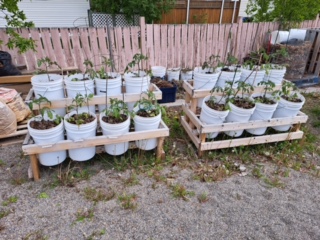
Members of the Garden team & myself had the privilege of collaborating with the Grade 2 class at Simons Valley School. I had reached out to the schools to see if they wanted to grow plants for the community garden. Miss Corinne responded and committed to growing seedlings for the garden.
The class also participates in a program supported by NASA where they grow tomato seeds that have been in space, then they observe them and report on their findings.
I took delivery of those plants (May Long) and I am feeling very grateful to a class of young gardeners and a teacher who went above and beyond.
Thank you very much!
Karen
BEDS FOR RENT
Update: 04/19 – All beds are now allocated for the 2024 season, thank you for your interest in signing up.
Are you looking for a plot to grow your own food? Do you want to connect with a supportive network of green thumbs? The 2024 garden plots are available to rent for the gardening season. Beds open May 1/23.
Location: In behind Salvation Army Berkshire Citadel Church. 222 Sandarac Drive
Fee: A valid community membership is required, along with $20/year for bed rental – you can sign up for a community membership by visiting https://sandstonemacewan.com/membership. By clicking on Pay Now below, you confirm that you will be asked to sign the garden agreement & garden rules before the garden season commences. An SMCA Garden Bed cannot be held without payment.
Please contact garden@sandstonemacewan.com to confirm bed availability before payment is sent. All payments are non-refundable. SMCA uses PayPal to process your payment – you can sign in as a PayPal user or pay as a guest using your credit or debit card.
APRIL 2024 – Gardening in a Drought
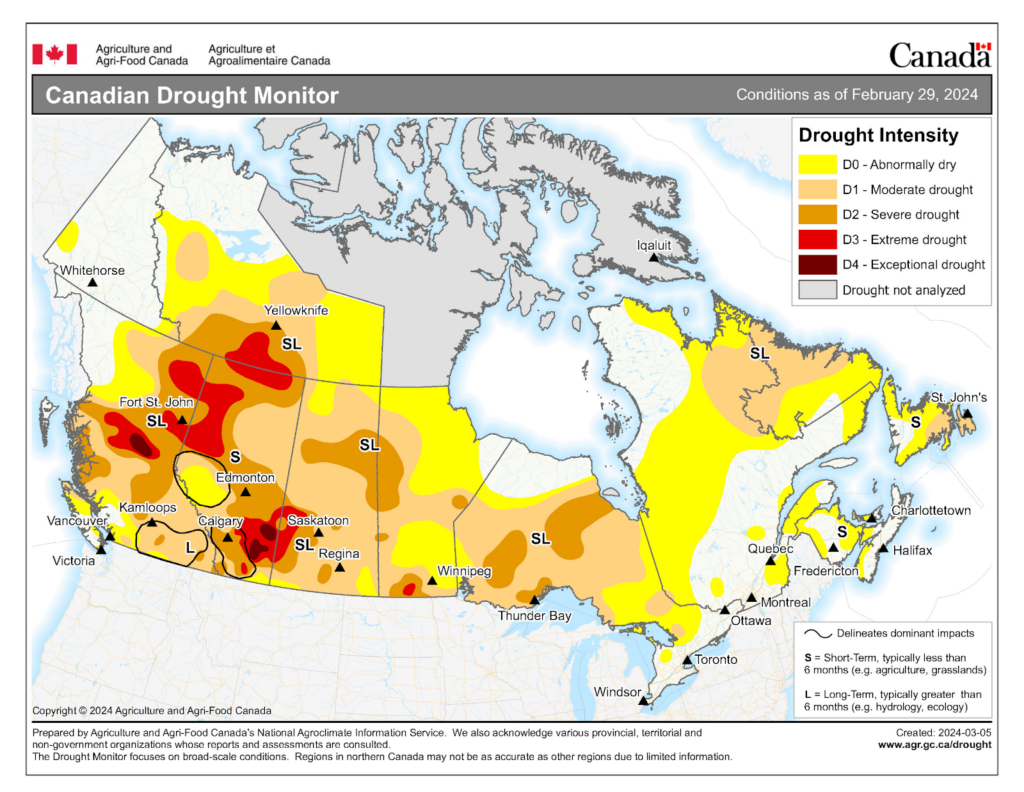
I grew up in Utah where it was an annual expectation that some portion of the state would have a bullet ricochet, fireworks go amiss, or lightning strike at just the wrong time igniting a wildfire that would displace wildlife and people. I often mourned for the burning earth. Then I moved to Canada, the land of lakes and rivers, and thought I’d left the drought lifestyle behind me. Silly me.
In 2023 alone, Canada had a reported 18.5 million hectares burned. It was the worst fire year on record. After the dry winter we’ve just been through, 2024 is looking like it wants to compete for the title.
Many of us are blessed to spend summer time in the forests and mountains. None of us want to see them burn. But what can we do?
Five ways to be more water wise in the garden.
1) Water the rootzone – Instead of using overhead spraying or sprinklers, invest in drip lines or bubblers that leave the water on the ground. This will prevent the majority of evaporation and you’ll be using less water.
2) Use the rain – It’s free and full of nutrients city water doesn’t have, so why not use it? Investing in a rain catch system will save you on city water and leave you with a more beautiful garden. Green Calgary offers blue rain barrels for residences in the city. If the blue barrels are hideous to you, Pinterest has a wealth of ideas for hiding them.
3) Mulch, Mulch, Mulch – If you’ve been to any of my gardening classes, you’ve heard me talk about mulch. Mulch is the answer to many gardening woes but is especially crucial when it comes to your water. Mulch will act as a reserve of water for the soil as well as cooling the garden so that less watering is needed. Any natural organic mulch is going to be your best friend. I promise.
4) Reduce your lawn – Every 1,000 sq. ft. of lawn requires 624 gallons of water to receive one inch of water. That’s A LOT of water. Shrinking your lawn is as easy as giving your flower beds an extra inch or two of space or opening up a new veggie bed. Food and flowers require much less water than turf does. Another option is to consider xeriscaping or switching to a grass alternative like clover.
5) Commit to a watering schedule – The City of Calgary has already warned us that water restrictions are likely this year. Commit at the start of the season to watering only once a week as needed and using the water for your trees, food producers, and pollinators.
Hopefully we’ll be blessed with a wet June and the province will begin to recover from the past few years. But, let take this year to adopt water wise gardening habits and make a difference.
Deb Sabey
FEBRUARY 2024
We are looking for Garden Volunteers!
Interested or want more information please email info@sandstonemacewan.com

JANUARY 2024 Butterfly Flower Plants
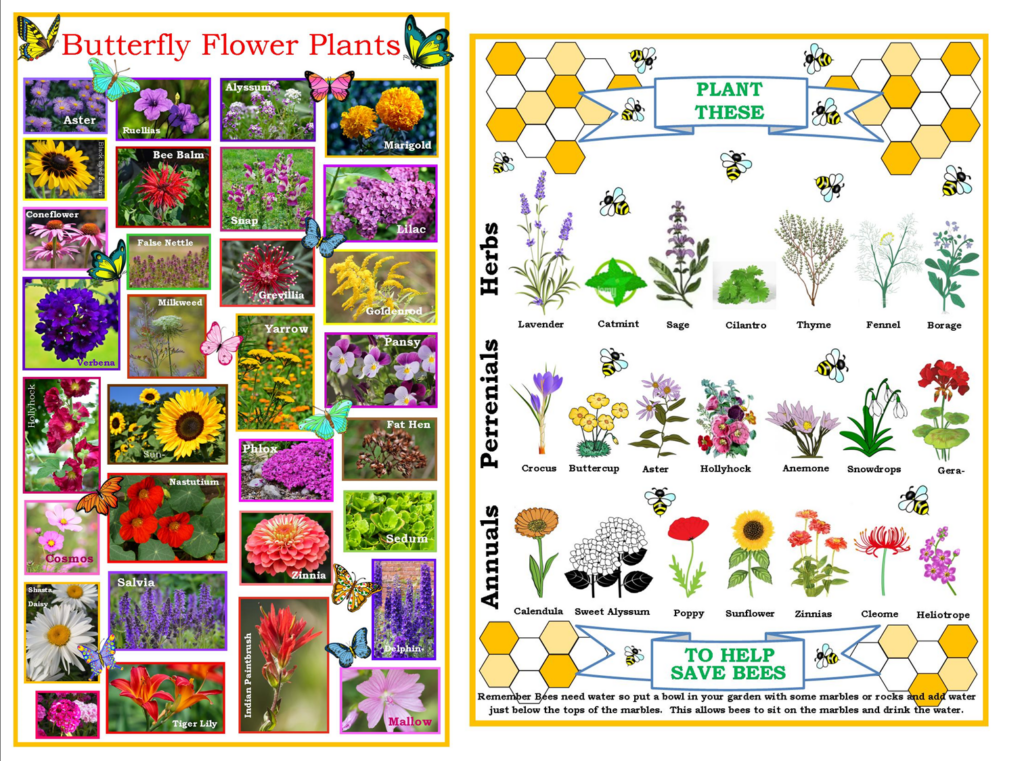
NOVEMBER 2023 Poisonous Plants and Why I Keep Them
By Deb Sabey
In 2014, my husband and I took a two week trip to the UK where we visited country castles and modern cities alike. The whole trip was full of great experiences and many memories I hold fondly still. One of the highlights of travelling to the castles of the UK is the many gardens that are tended around them. From Cardiff to Sterling and Belfast to Killarny, there are gardens that delighted my soul.
It was in Blarney, Ireland that I fulfilled a lifelong dream and gave first breath to a new one. I grew up hearing my mom’s stories of kissing the Blarney stone and thereby, getting the gift of gab. In my teen years and 20’s, I desperately wanted to follow in her footsteps. When it was finally my turn, I kissed it TWICE! Then, after descending the many flights of stairs that make Blarney Castle, I saw my first poison garden and my new dream was born.
The Poison Garden of Blarney Castle is reputed to be the world’s most dangerous place. Passing the skull and crossbones sign that says “Poison Garden, do not touch, smell, or eat any plant!” one then walks through a beautiful garden with flowers, textures, and colors that are simply breathtaking. With plants like nightshade, poppy, hellebore, castor bean, hemlock, monkshood, and even caged cannabis, the gardens are dedicated to teaching about the many uses, nefarious or medicinal, of the plants throughout history.
One of the questions I get regularly as a professional gardener is “should I pull out this plant? I heard it was poisonous” For most plants, the poisoning deaths attributed to them aren’t from their natural garden existence. The vast majority of problems come when we begin to make products or food from them. This is also where they become the medicines that save our lives. It all comes down to knowledge.
I would never remove a plant simply because it is “poisonous”. If I did, my garden would not have foxglove, lily of the valley, monkshood, daffodil, hyacinth, rhubarb, tomatoes or potatoes! What a sad garden I’d be left with.
Now, there are some plants that will irritate the skin or make us ill if ingested (think, nettle, thistle, or henbane) and others yet that can send a person into a coma. This is where knowledge and respect for our plants is key. ( if you know you have an allergy or sensitivity to a plant, happily get rid of it!
I would never keep something in my garden that I knew to be a bother to me or my loved ones.)
For example, Tomatoes are either a delicious food or the reigning member of the nightshade poison family (as the leaves, stems, and roots all carry the toxin). Potatoes are also a member of the nightshade family but have been manipulated over time so that we eat the root. We stay away from the green fruit of a potato plant because they carry the toxin in high concentration. When we know what’s safe, we can enjoy them for their beauty and medicinal benefits without worry.
Another reason I love “poisonous” plants is their tendency to not be eaten by moose, deer, rabbits, and squirrels, which is something we tend to deal with, especially on properties near green spaces. Perhaps you’ve noticed deer that let the hostas grow nice and lush before eating them to the ground come early June but The monkshood right next to them are always left untouched. If you have issues with wildlife eating your garden, consider adding more of the plants listed in this article as they may go undisturbed by deer and other animals and you’ll get to enjoy the blooms of your labors. (That said, in drought years where food is scarce, all bets are off!)
The number one rule with anything from the garden should probably be borrowed from one of the best canadian productions,
“Don’t you put it in your mouth,
Don’t you stuff it in your face,
Though it might look good to eat,
And it might look good to taste!
You could get sick, (ICK!)
Real quick! (ICK!)
Real sick, real… ICK!”
All plants in your yard should be known and treated properly. There are apps aplenty to help identify any in question. If you have young children who love to eat everything or pets that can’t help themselves, you may not be comfortable with some. I’ve taught my kids what is ok to touch or eat and what isn’t and have never had a problem. Decide what works for you.
If you decide that the threat from a plant is higher than you’re comfortable with, long sleeves and proper gardening gloves are your first defence when removing them. Some can be given to other gardeners who don’t mind them and some, if noxious weeds, should be black binned.
Whatever you decide, I hope you’ll give “poisonous” plants an extra thought. With some care they can add so much.
Asides that can go with the article:
To find a list of plants that may not be safe around your plants, visit: aspca.org/pet-care/animal-poison-control/toxic-and-non-toxic-plants
Plants commonly found in Calgary gardens that are “poisonous” that I would NOT take out because of their toxicity alone:
Monkshood
Foxglove
Crocus
Daisy
Narcisuss
Hyacinth
Lily of the valley
Rhubarb
Tulips
Cotoneaster berries
Mayday Tree berries
Holiday plants that are toxic:
Poinsettia
Holly Berries
Mistletoe
Yew (needles and berries)
OCTOBER 2023 Compost Workshop by Karen Lessard
With the garden season winding down this fall, the community garden ended our season by having the Calgary Compost Cooperative come to our garden on Sept 21/23 to start a hot compost pile.
We had gardeners show up to learn about hot composting and the role of microbes on creating fertility naturally in the soil.
There is a very specific recipe that was followed and there was lots of sorting of material and soaking of wood chips and spent brewing grains and coffee etc. After all the material was sorted into 50 buckets, we dumped the material into a wire mesh ring that sits on a pallet covered with wire to allow for air flow but keep the critters out. Once full, the pile was covered with a tarp to keep moisture in. After that, all we do is wait for the microbes to start feasting and reproducing.
Within a day or so the temperature rises. At first, the smell was bad and we needed to get it aired out. Once we turned it, to get some more air into the pile, the temperature increased. The pile hit a high temperature of 60 degrees C. At these high temperatures, the pile needs to be turned within 24 hours. But for the pile to kill any weed seeds, pathogens etc. it needs to hit these temperatures 3 times. Why three times? Because it is the core that hits the temps and it needs to be turned strategically to make sure all of the pile makes it into the centre.
The pile completed 2 of these cycles. We did not get it to heat up again before the weather changed and got cold.
It was lots of work keeping it turned. We have had help from the members of Compost Club at Highfield Regenerative Farm, a couple of the community gardens members and one resident who was just curious about it. We also had help from a couple from the Calgary Permaculture Guild.
Although this compost did not complete three cycles. I am looking forward to spreading this great compost in all the beds in the spring.
It has been a great science project to undertake.
SEPTEMBER 2023 Community Garden Recap by Karen Lessard
Fall is here, and with it we end the first year of our Sandstone MacEwan community garden. It was a wonderful year in terms of bringing people together, growing food, sharing ideas, and building community.
All our beds were rented! To kick off the growing season we held a garden cleanup. We also had some help from some students from Winston Churchill High School, who helped move around some dirt and mulch.
Last year we had built a pollinator bed; this year, we had Wild Outside and the 224 Scouts help us plant it. Wild Outside also donated all the plants that were used, and helped us with some gardening chores!
I had a community member approach me looking for volunteer opportunities within the garden. She was on maternity leave and wanted to help get the garden off the ground. She was a great help to our group by digging, watering, and weeding. She is a valuable addition to our garden and I will really miss her when the season is done.
In the spring we also noticed that we had an abundance of kale growing in the garden, so we had a kale-o-bration! Four kale-loving gardeners came together to create their favorite recipes and share these recipes and dishes with each other. We picked up some new ideas on how to incorporate this superfood into our diets.
One night, two visitors to the garden who had taken an interest in what we were growing offered plants. I had offered a space in some of the pots we had just filled with soil to let her plant in the garden too. She is a supporter of the garden, often coming to shares her knowledge and love of growing things with us. She has also shared her harvests! We hope she will join us next year. We are growing a pumpkin vine and ground cherries because of her.
Some of the progress in the garden we made this year include:
-adding more water barrels located throughout the garden.
-a new retractable hose and new garden hose.
-nine (wow!) new planting beds which include a strawberry patch. These beds will be used for potatoes and zucchini so there is more room in the large beds for other vegetables.
-some gallon pail stands were created for plants like potatoes and tomatoes. These stands show people who might not have the space or want to dig up a garden how they can still plant some veggies and have fresh grown produce at home
-two new four-by-eight beds have been set up in the garden, bringing the total number of beds to fourteen!
-three bay compost pile! This compost pile has been filling up this summer, with hopes to be able to replenish the beds with compost next spring.
-with some purchased and donated plants, we started a new raspberry patch.
-two strawberry patches.
-four haskap bushes, two donated, two purchased.
-a donated cherry tree and Josta berries, two kiwi vines, and rose bushes.
-donated blueberries, Nanking cherry bushes, and an obelisk.
-Sabey Landscaping donated flowers, a composter, soil, and grow bags.
I appreciate our community support so much. I was messaged many times with offers of free sunflowers, tomatoes, and raspberry plants for the garden and approached multiple times with queries of joining!
We also are hosting our first workshop with the Calgary Compost Cooperative out of the Highfield Regenerative Farm. I hope this will be the first of many collaborative events. We have opened this event up to the community and to the gardeners at Beddington Community Garden.
Overall, I am thrilled with the support and progress!
AUGUST 2023 – Preserving Pollinators: A Vital Task for a Sustainable Future
Pollinators, including bees, butterflies, birds, bats, and other insects, play a crucial role in our ecosystems and food production. They facilitate the transfer of pollen from male to female flowers, enabling fertilization and the subsequent production of fruits, seeds, and nuts. Unfortunately, pollinators worldwide are facing numerous challenges that threaten their survival. It is our responsibility to protect these essential creatures and safeguard the delicate balance of our natural world.
Pollinators are indispensable to biodiversity and food security. They contribute to the reproduction of nearly 90% of flowering plants and are responsible for pollinating more than 75% of the world’s food crops, including fruits, vegetables, nuts, and seeds. Their role in maintaining healthy ecosystems cannot be overstated, as they support the growth of countless plant species and sustain the habitats of numerous animals.
Pollinators are confronted with a range of challenges that jeopardize their populations. Habitat loss due to urbanization, intensive agriculture, and deforestation is a significant threat. Pesticides, including neonicotinoids, can harm pollinators by affecting their navigation, feeding, and reproduction. Climate change disrupts natural patterns and alters flowering times, impacting the synchronization between pollinators and plants. Invasive species, diseases, and parasites also pose risks to pollinator populations.
Protecting Pollinators: Actions and Solutions:
1. Preserve and Create Habitat: Protecting and restoring natural habitats is crucial. Promote the establishment of pollinator-friendly spaces by planting native flowering plants, shrubs, and trees in gardens, parks, and urban areas. These areas serve as food sources and nesting sites for pollinators.
2. Reduce Pesticide Use: Implement integrated pest management practices that minimize the reliance on chemical pesticides. Encourage the use of natural alternatives and eco-friendly pest control methods to protect pollinators while maintaining agricultural productivity.
3. Support Organic Agriculture: Promote organic farming practices that avoid synthetic pesticides and prioritize ecological balance. Organic farms provide healthier habitats for pollinators, reducing their exposure to harmful chemicals.
4. Raise Awareness and Education: Educate communities, farmers, and gardeners about the importance of pollinators and the actions they can take to protect them. Encourage the public to create pollinator-friendly gardens, participate in citizen science projects, and support organizations working towards pollinator conservation.
5. Collaborate with Local Communities: Engage local communities, schools, and businesses in pollinator conservation efforts. Foster partnerships with farmers, landowners, and policymakers to implement pollinator-friendly policies and practices.
6. Research and Monitoring: Invest in research to better understand the challenges facing pollinators and develop innovative solutions. Monitor pollinator populations to identify trends, assess risks, and inform conservation strategies.
Protecting pollinators is vital for the health and sustainability of our ecosystems, agriculture, and overall well-being. By taking collective action to preserve habitats, reduce pesticide use, promote organic practices, and raise awareness, we can safeguard these invaluable creatures. Together, we can ensure a future where pollinators thrive, biodiversity flourishes, and our food systems remain resilient. Let us embrace our role as stewards of the natural world and prioritize the conservation of pollinators for generations to come.
JULY 2023 – Butterflyway
In 2022 we partnered with Beddington Heights Community Association (BHCA) to increase our Butterflyway! Check out our 2022 map below. THANK YOU to our 3 Butterflyway Rangers and our Jr. Ranger! We couldn’t do it without you. As always, please let us know if you’d like to be a Ranger this year and share your love of gardening.
Help us continue our Butterflyway this year! We would love to locate more residents who tend gardens (even just plant pots!) with pollinators in mind. If you participated in 2020, 2021 and/or 2022, let us know if you are still actively gardening for pollinators so we can keep you on the map. You may already be pollinator-friendly without knowing it! It is our collective efforts as neighbours that can provide pollinators with plentiful food sources within their range.
Not sure if you are helping pollinators, or want to get started? CLICK HERE
Learn more or to let us know you are helping pollinators! CONTACT US
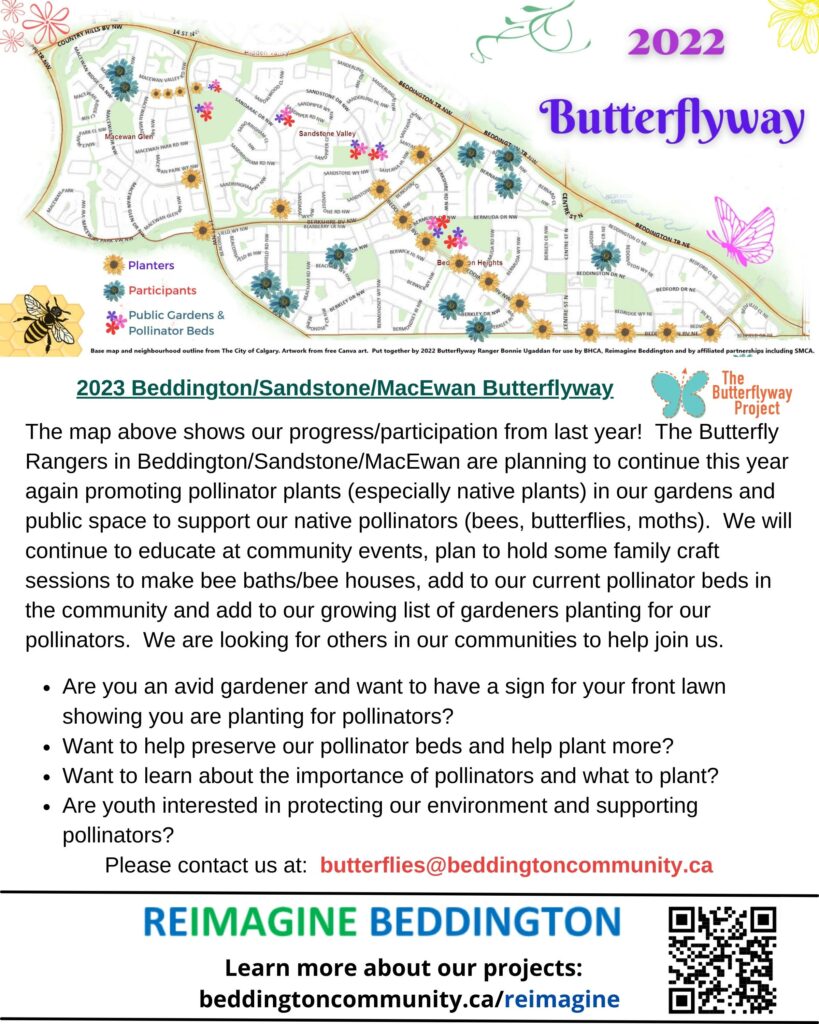
MAY 2023 – Garden beds 100% reserved!
Great news for our community garden – all our SMCA garden beds have now been reserved!
On behalf of the board & garden team, thank you to everyone who inquired and/or signed up.
MARCH 2023 – Garden bed update – 50% reserved!
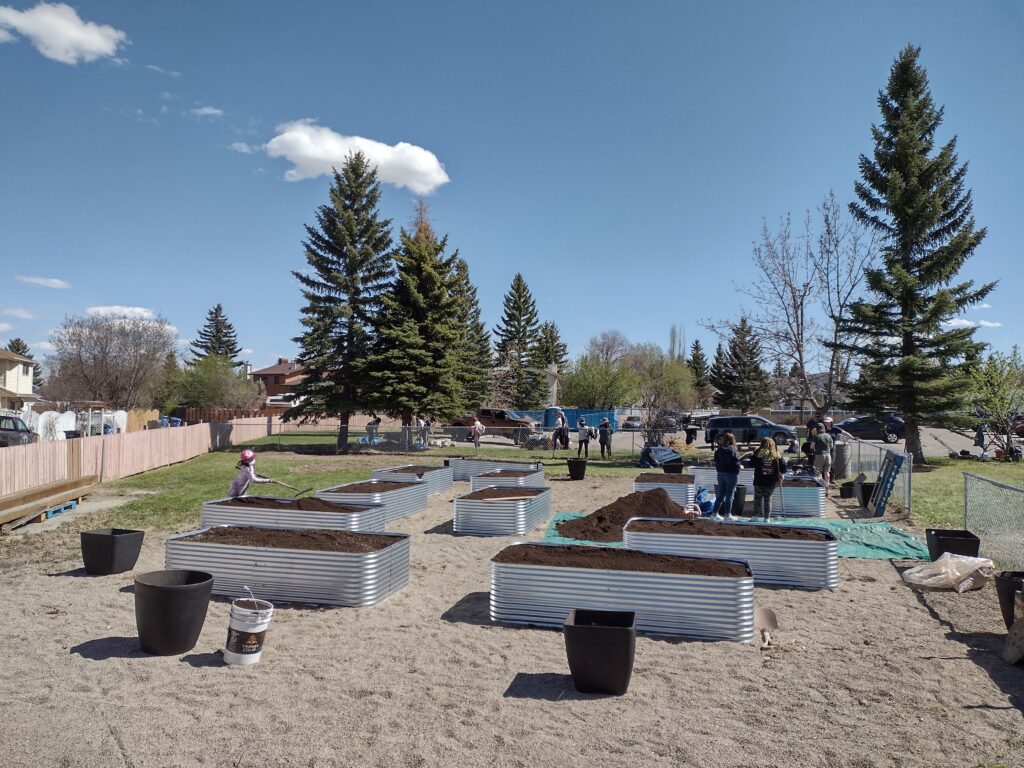
Our community has quite the set of green thumbs! In the short time since we announced that the reservations were open for the community garden, we’ve already seen about half our beds get reserved! If you’re looking for a bed, we recommend you sign up quickly – and it couldn’t be easier to sign up in three 3 easy steps:
- Make sure you have an active SMCA membership – $20 for 1 year, $50 for 3 years – signup at https://sandstonemacewan.com/membership if you don’t have one
- Click on the Pay Now button below to send $20 to SMCA to reserve your bed – Credit or Debit is accepted
- Wait to hear from our SMCA Garden team – alternatively, send them an email at garden@sandstonemacewan.com
[Pay now button removed due to all garden beds being reserved – May 3rd, 2023]
SMCA uses PayPal to process your payment – you can sign in as a PayPal user or pay as a guest using your credit or debit card. You will be asked to sign the garden agreement & rules before the season commences. SMCA Garden beds cannot be held without payment & all payments are non-refundable.
MARCH 2023
Are you looking for a plot to grow your own food? Do you want to connect with a supportive network of green thumbs? The 2023 garden plots are available to rent for the gardening season. Beds open May 1/23.
Location: In behind Salvation Army Berkshire Citadel Church. 222 Sandarac Drive
Fee: A valid community membership is required, along with $20/year for bed rental – you can sign up for a community membership by visiting https://sandstonemacewan.com/membership. By clicking on Pay Now below, you confirm that you will be asked to sign the garden agreement & garden rules before the garden season commences. An SMCA Garden Bed cannot be held without payment.
Please contact garden@sandstonemacewan.com to confirm bed availability before payment is sent. All payments are non-refundable.
[Pay now button removed due to all garden beds being reserved – May 3rd, 2023]
SMCA uses PayPal to process your payment – you can sign in as a PayPal user or pay as a guest using your credit or debit card.
JANUARY 2023
The Butterflyway Project is a volunteer-led movement that is growing habitats for bees and butterflies in neighbourhoods throughout Canada.

The Sandstone Macewan Community Garden and the Beddington Community Garden have partnered to create a larger network of pollinator-friendly spaces. We have created pollinator beds in both gardens and throughout part of the neighbourhood.
Wild pollinators such as butterflies and bees are crucial to human survival. Climate change, land development and pesticide use threaten their survival and, therefore ours as well. The Butterflyway Project helps people create viable pollinator habitats in neighbourhoods across Canada.
How can you help?
Start small by adding native wildflowers to your garden, yard or balcony. Join forces with friends and neighbours to share seeds and plants. Next, encourage schools, businesses and institutions to add pollinator-friendly plants to their gardens and properties. Stitch this network of pollinator patches together and you’ve created your own Butterflyway!
Seven steps to creating a Butterflyway
- Grow native wildflowers
- Invest in a tree or shrub
- Create a woodpile bug hotel
- Leave sunny soil patches for bees
- Provide a water source
- Learn more about local bees and butterflies
- Create a neighbourhood Butterflyway!
If you would like to get involved and help create pollinator-friendly spaces or become a Butterfly way Ranger contact us at info@sandstonemacewan.com
NOVEMBER 2022

We have completed our first year of building a community garden and I would say on the gardener’s behalf that we really enjoyed having the space to grow vegetables.
I have to thank the Salvation Army church for partnering with us and allowing us to create a garden in their yard!
I would also like to acknowledge the Community Association, 224 Sandstone Scouts and the community volunteers that came to help in getting the galvanized beds put together and set in place and filled. We carried a lot of soil by hand but did have some help by a local contractor to fill the beds.
Once the beds were filled we still needed to get a shed and water station complete.
Thanks to Tim, a volunteer who regularly donates his time to helping the Community Association, he built a stand for the water barrels.
Nicola and her husband helped in setting up the hose and hose reel.
Sue and Sharon from the Community Association, helped in getting a shed for the garden and Sharon’s husband Darcy and their son put it together.
Pinky and Phil, who are longtime community volunteers donated a picnic table for the space.
There are 12 raised beds and all were planted by 7 different families. Most of us had met for the first time through this project.
Thanks to Suzanne who grew tomatoes and peas and kale and donated the plants!
There are many things yet to accomplish in creating this space. We are planning on expanding the planting area, and creating a pollinator bed as part of the Butterflyway Project, and
we are always looking for people to come and join us to create a place to visit and enjoy, educate and take pride in.
If you want to get involved in your community and can help in some way or are interested in renting a bed, contact info@sandstonemacewan.com
MARCH 2022
See the photo and imagine what it could be and help us create that vision!
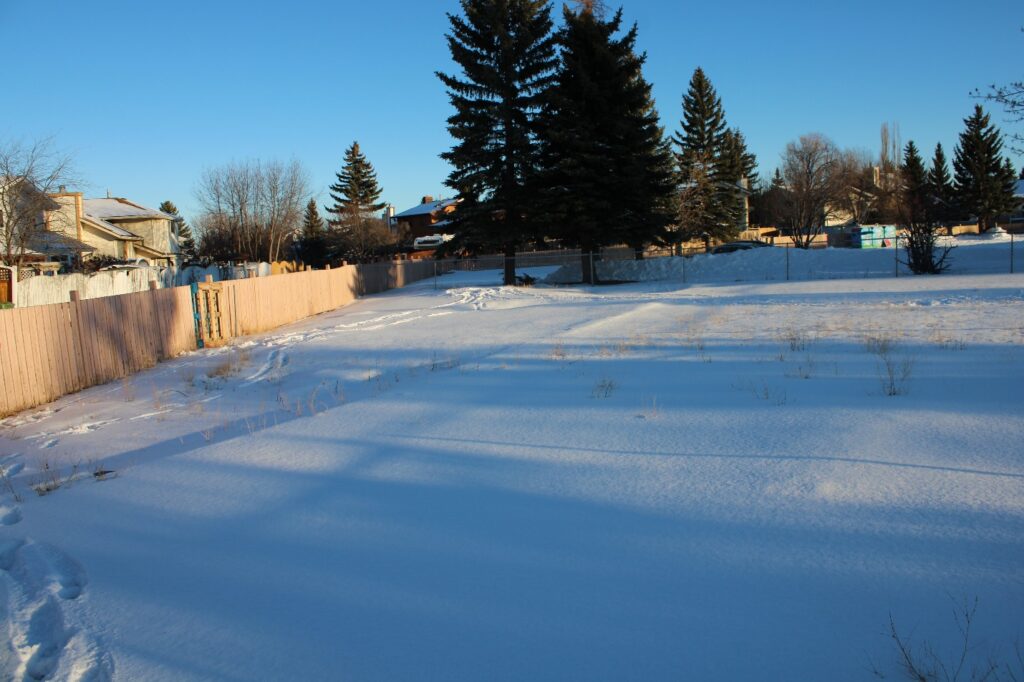
It is with great excitement that we are able to announce the location of the Sandstone MacEwan Community Garden! The Community Garden will be located behind the parking lot of the Berkshire Citadel (Salvation Army Church) in Sandstone. It is with great thanks to the Salvation Army who have provided the site and the Sandstone MacEwan Community Association that provided the support for this to happen.
Now we have the site, the hard work is about to begin!
There is a great opportunity for members of the community to become involved and let this garden bloom. We hope to start small and grow from there so this can be a place for the community to meet and enjoy the outdoors. We hope to eventually have plots for rent and also put in benches and a place for butterflies and other native insects to thrive! Eventually we hope to offer classes for youth and adults to learn about gardening in Calgary from beginners to those with more experience. What does your vision include?
What do we need right now? We need help with raising money for infrastructure. If you know of anyone who can contribute, a business that would like to contribute, have expertise at raising funds or would like to help raise funds please email us at info@sandstonemacewan.com.. If you would like to join the gardening committee (a committee attached to the Community Association) or volunteer in any way please email too. Gardening experience is a plus, but not required. We also need people with construction experience as well! Also if you have any gardening supplies/tools that you would like to donate please also contact us.
Please join us and be a part of this wonderful growing part of the community.
JANUARY 2022
Currently, we are working to collaborate with the Berkshire Citadel Salvation Army Church to have a community garden in the space where there used to be a playground. We feel this is a better fit to enhance the “community” part of the garden.
We are still in our planning stages and still need volunteers to help on the planning committee and building the garden. We are also in need of donations for supplies or if you have extra gardening items you no longer need feel free to get in touch with us as maybe we can use that item. To get involved, donate or have questions please contact us at info@sandstonemacewan.com.
OCTOBER 2021
Time to put your garden to rest. Decide now if your yard will be neat and tidy or if you’ll be a pollinator yard. Many of our crucial pollinators need plant stalks and piles of leaves to over winter. If cleaning up this fall, cut your plants to 8” and rake the leaves into your garden beds. Leaving plant debris to catch snow is also a great way to fight drought.
Mulch all of your garden before putting it to bed, especially any tender perennials like strawberries or roses. You can pick up straw, save your leaves, or even use grass clippings as mulching for winter. A decent dose of compost would also be appreciated by your soil and perennials, setting spring up for success. If you’re planning on planting bulbs like tulips, daffodils, or hyacinth, do so before the end of the month. It’s been unusually warm so I’d recommend waiting until after thanksgiving. If squirrels are a problem, put some blood/bonemeal in the hole with the bulb or consider a netting over the top.
SEPTEMBER 2021
Now’s a great time to take stock of any perennials that may need to be divided or collect seeds from plants that have already had their hay day. Delphinium, columbine, poppies, and the like are great for collecting seeds to scatter where you would actually like them to grow next year or to trade with your fellow Sandstone-MacEwan gardeners. Most perennials will be slowing down for the winter and will be ready to be split soon. Reach out to that neighbor and see if they have some to share.
It’s also time to start thinking about spring…bulbs, that is. Spring bloomers like tulips and daffodils, muscari and hyacinth, alliums and lilies, need to be planted before the ground freezes. They require a freeze-thaw cycle before they’ll bloom. They also need to be protected from squirrels and bunnies who will dig up your spring dreams before they even have a chance. Consider laying chicken wire with mulch on top (it’ll need removing in the spring but will hopefully save you some heartbreak).
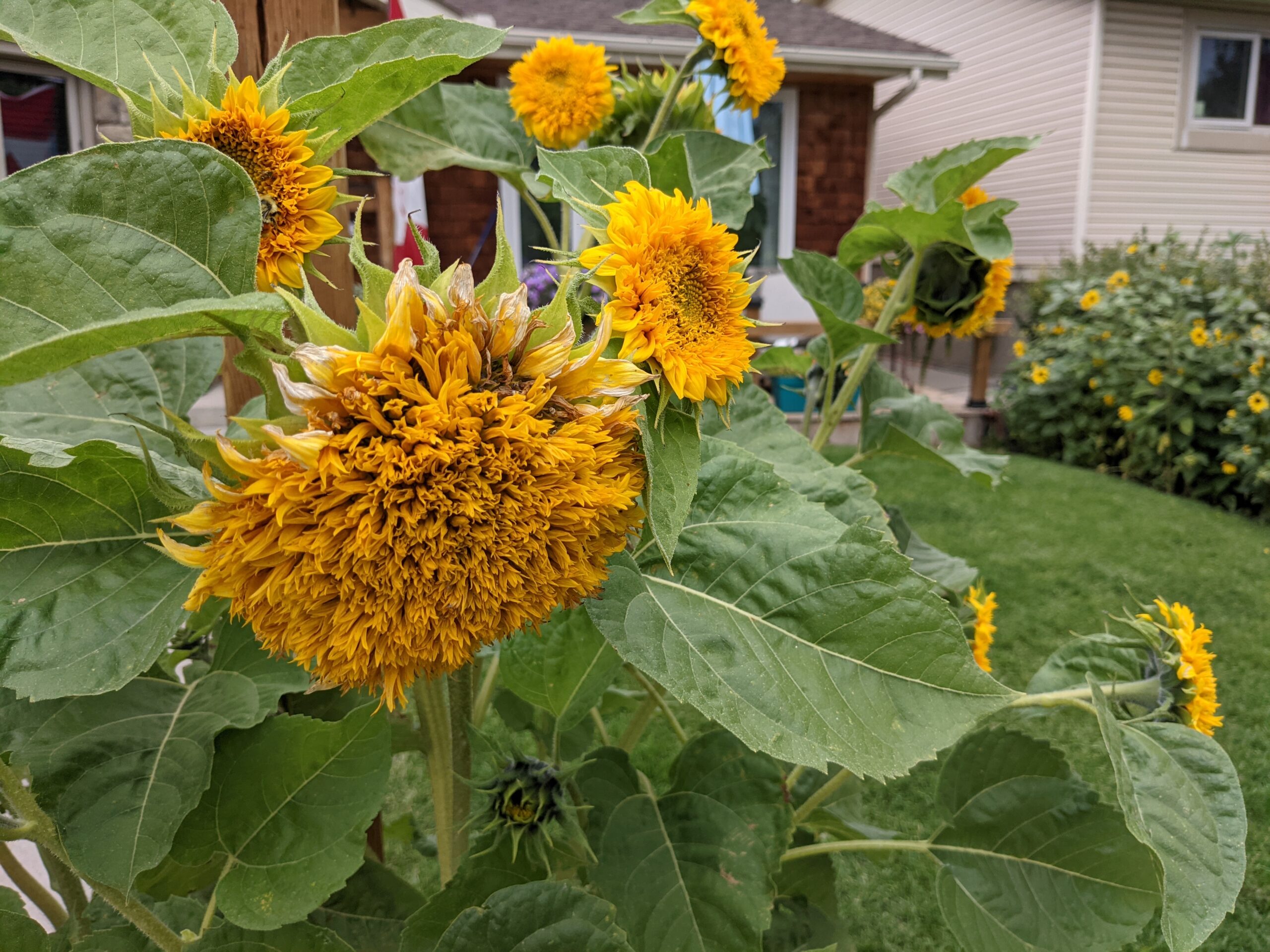
AUGUST 2021
The Sandstone MacEwan Community Association president was asked to judge the front gardens at the Heritage Villas in MacEwan but due to her busy schedule the request came to me. I was thrilled to be able to view all the gardens. Judging was going to be tough but getting to see the creativity was worth it. After walking the complex, I had made my decision. Her garden was bursting with plants and she had a fairy garden in her driveway also. It was just begging for people to check it out.
The winner Angy Lajoie commenting on how her approach to gardening. The pictures of her garden are below.


“I just really enjoy playing around with whatever I have on hand or what I find mostly at garage sales. Also many items are given to me from people that know I like to “play” around with. I just buy flowers as I see them and then throw them together….not always planned very well.
I saw the broken flower pot fairy garden on the net by accident and I knew then I wanted to make one of those. The village is great in that everyone helps out. I told a neighbor I needed a big pot and she found one for me on marketplace etc.”
Thanks to the social committee at Heritage Villas for including us in your event!
Sincerely,
Karen L.
JULY 2021
While you’re enjoying your summer BBQ remember that your plants would love some too…Food that is! Add compost and fertilizer as needed keeping in mind some plants are heavy feeders. Mushroom compost from Highline Mushroom in Crossfield is free and is amazing at providing the food your plants need. You can also use well-aged manure or make your own compost tea by keeping a bucket of water and steeping your trimmed plant foliage in it. Comfrey or Nettle make especially nutrient-dense tea. If you’re buying fertilizer for your annuals, grab something with a high middle number as the phosphorus number encourages blooms and use it every third or fourth watering.
Deadheading is another key to keeping your pots and baskets looking fantastic. Deadheading stops the plant from producing seeds and encourages it to try again by blooming more. Deadheading the proper way will get you bushier, more full plants with lots of blooms and wow factor. To deadhead properly you need to not only remove the spent bloom but follow to bloom stalk down an inch and pinch there (as pictured).
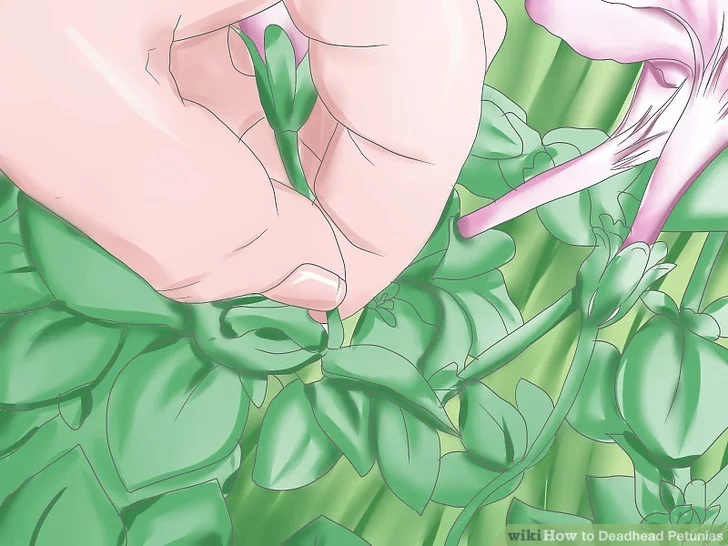
JUNE 2021
If there’s something you haven’t planted, now’s the time! If starting from seed, make sure it fruits in 60-90 days or you may not see fruit. Buy larger plants from local garden centers or see if a neighbor has something to share. Enjoy your cool-weather bedding plants and water them well to extend their season.
As we head into summer temperatures, be water wise in your gardens. Weeding regularly plays a key part in water consumption in your yard. Mulch not only adds a finished look to your beds but also holds moisture and deters weeds. (Did you know the City of Calgary gives out free mulch? Pick up as much as you need from the SE landfill). Water in the mornings or in the evenings to make sure your plants get the best of it.
Watch for bolting in your cool weather crops like brassicas and lettuces. if their season is over, it’s time to succession plant some more.
We’re also due for some hail along the way. Get some Goodwill bedsheets ready to cover things if you can. If you can’t cover and your plants get beat up, don’t give up on them! You’ll be amazed at how quickly some things recover after being decimated by a storm. Hope is a gardeners best friend and constant companion.
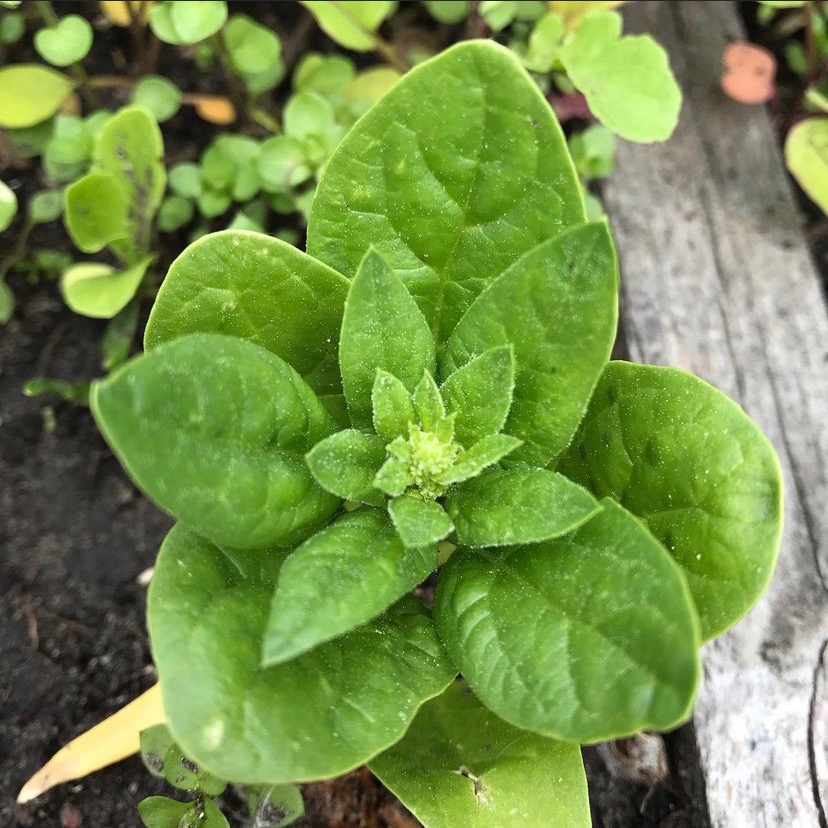
MAY 2021
Now’s the time to harden off your seedlings and divide your perennials. Hardening your seedlings is the most important thing you can do to have a successful garden. Rush it and all your work will have been for naught. It should take 4 days: Put your plants in a semi-shaded and sheltered area outside and bring them in at night. Increase their outside time until the risk of frost is past. Lift and divide your perennials before they really take off.
Plant your cold-hardy veg like peas, beets, and spinach early this month. After last frost, or around May long, plant out your veg and annuals. Be wary of nighttime temps and have a blanket handy. Did you know that water insulates against freezing? A nighttime watering has saved many a plant from a frosty death.
Start your watch for the red lily beetles and be vigilant! If you see one, there are more!
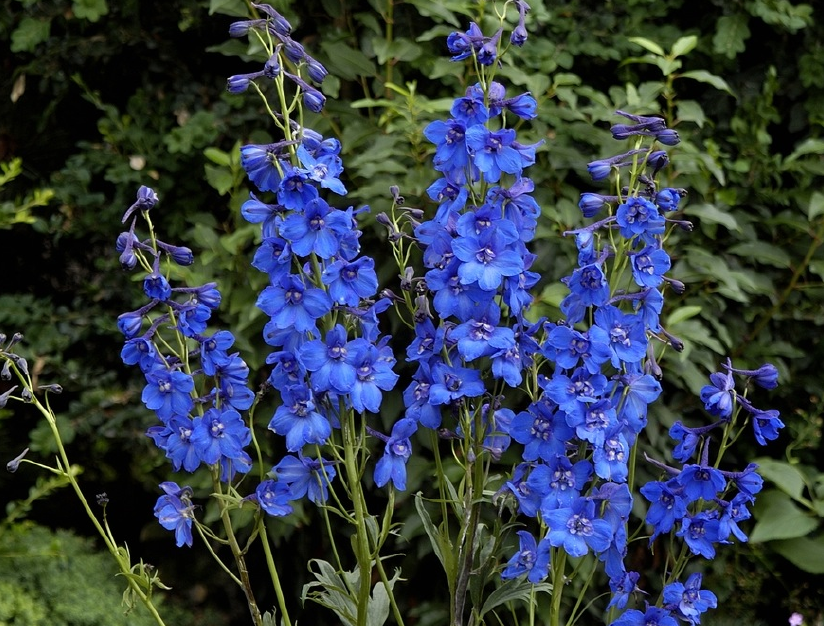
Plant Highlight: Delphinium is an old-time favourite perennial in the garden. Each year drifts of them will bloom and stun passersby. Loved by pollinators, you’ll often see a fuzzy behind sticking out of the blooms. These don’t bloom until high summer, now is the time to save them. The Delphinium Worm eggs overwinter in the stalk and they’ll deform or eat your plant if left untouched. They’re easy enough to be rid of: when your plant is 6’’ tall, cut it down. By cutting it to the ground, you’ll upset the worm’s life cycle and your plant will regrow quickly. You can also pick the worms as you see them or, if you’d like to use an insecticide, BTK works well. If you do have worms, make sure to cut it to the ground in the fall and you’ll reduce next year’s population too.
APRIL 2021

SMCA will be hosting its annual Compost Giveaway Event this year (weather permitting!) – May 1st, 10am at the Hockey Rink on Sandarac Drive. More information can be found here – http://sandstonemacewan.com/event/smca-feed-soil-free-compost
MARCH 2021
The community is looking for feedback through a Google Docs form to gauge interest in this opportunity – please click on the link below to the survey to register your interest or feedback
https://docs.google.com/forms/d/e/1FAIpQLSc9cPq5AscXyEwckVt2PBQzvJ07sGglxvBnTPB5GeTwzAqaSQ/viewform
JANUARY 2021
SMCA is exploring the interest from the community to start a community garden, if interested in volunteering on a committee to organize one please contact info@sandstonemacewan.com
Why explore a community garden?
Community gardens offer people and the community many benefits. They provide opportunities for both recreational gardening and food production, in underutilized spaces. Community gardens are also great for the environment. Food grown locally reduces green house gases produced by long distance transportation of food. Gardens also contribute to biodiversity of species and help to support populations of pollinators. Finally, community gardens bring people together and may reduce crime rates in the neighbourhood by increasing visibility and engaging citizens in positive initiatives
Community gardens contribute to a healthy lifestyle by:
- providing fresh, safe, affordable herbs, fruits and vegetables
- helping to relieve stress and increase sense of wellness
- getting people active, which improves overall physical health
- providing social opportunities that build a sense of community and belonging
- giving people an opportunity to learn and share knowledge on gardening, nature, and cooking
Community gardens benefit the community as they help:
- build welcoming, safer communities
- improve the look of neighbourhoods
- reduce pollution by sequestering carbon and reducing the shipping of food over long distances
- support pollinator habitats that are necessary for community well-being
- reduce food insecurity
- connect people to nature
- educate people on where food comes from and provide opportunity for people, especially in urban spaces, to engage with their food system
- provide an inclusive meeting area where people of all ages and cultural backgrounds can come together to share experiences and knowledge
Help us get a community garden in the ground! Starting an effective community garden is not a simple task. But when passionate people come together with considerable organization, planning, cooperation, perseverance and resources, great success can be achieved. Interested in the benefits of a community garden for Sandstone MacEwan? Please contact info@sandstonemacewan.ca to volunteer or for more information.
Thank you.
